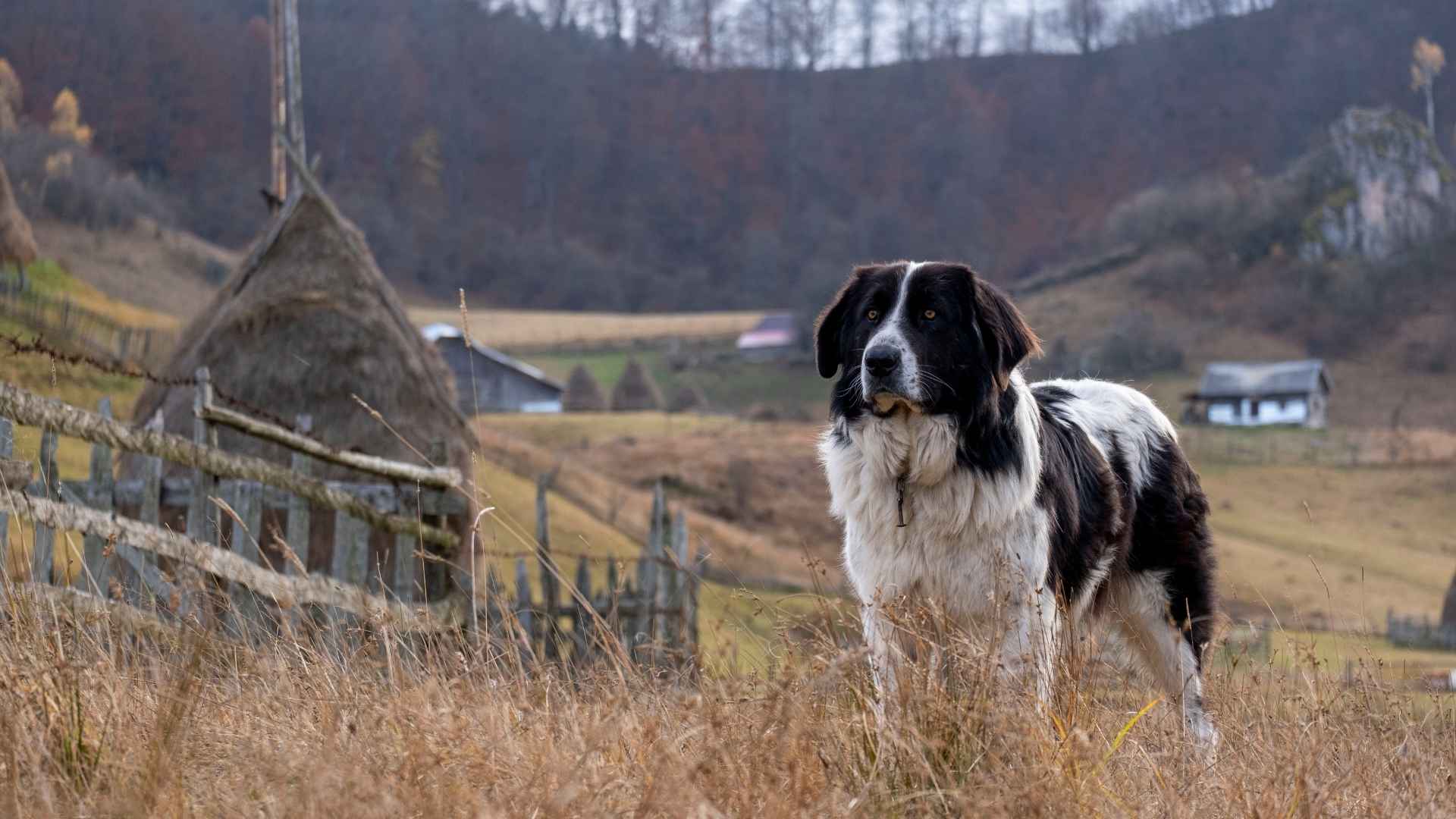When a farm depends on guardian dogs, the impact can be dramatic, especially if predators like wolves, coyotes, or bears are nearby. A USDA/APHIS survey found that 90% of sheep producers using livestock protection dogs saw a 62% drop in depredation losses after adoption.
What this means for a large-scale operation: livestock guardian dogs (LGDs) aren’t a luxury—they’re frontline defenders. These dogs live full-time with the flock, imprinting early so by adulthood they instinctively guard sheep, goats, cattle, even chickens.
Imagine that shift in reality: farms going from regular predator losses to fleets guarded by calm, attentive dogs who deter threats simply by their presence.
They come from working farms, silent flocks patrolled day and night, dogs that learn their job by living within the herd from just a few weeks old. It’s not about force—it’s about forming deep bonds, early imprinting, and letting instinct do the rest.
Dog Breeds Trusted for Large-Scale Farm Guarding
Here are the 7 livestock guardian dog breeds:
1. Akbash
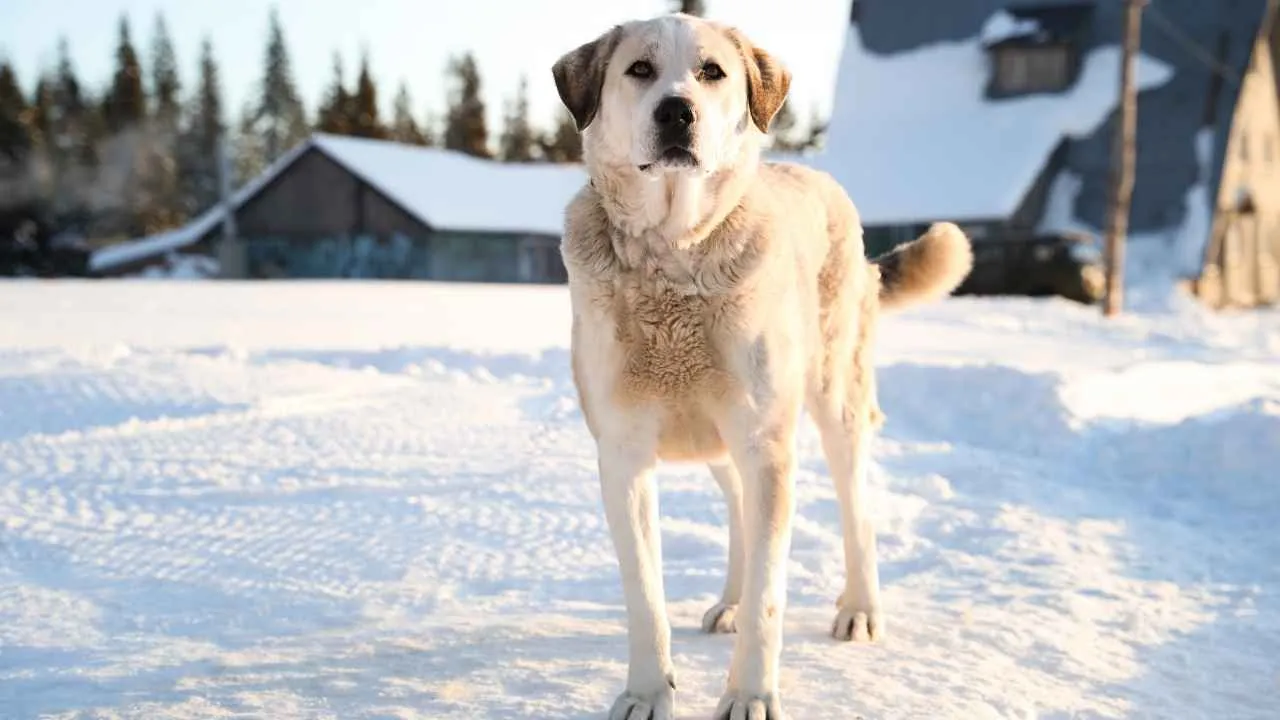
- Breed category: Rare breed valued among guardian dog breeds, especially in Asia Minor origins.
- Guard livestock & flock: Expert at guarding sheep and goats with minimal human intervention.
- Independent thinkers: Natural decision-makers; training takes patience and consistency.
- Physical attributes: Muscular, long-legged, agile—built for stamina and to detect threats early.
- Protective: Known to bark or posture before physical confrontation; effective deterrence.
- Lifespan & care: Lives about 10–12 years; moderate exercise and weekly grooming needed, especially during shedding seasons .
The Akbash dog has long served as a frontline guardian on large grazing operations, especially in rugged regions of western Anatolia. When paired with herds, these dogs are introduced as puppies to imprint early and bond deeply with livestock, exactly how effective livestock guardian dogs operate.
Their calm, independent stance and territorial guardianship make them trusted protectors against predators like wolves, bears, coyotes, and more.
According to the Hills Pet, they have a striking white, water-repellent double coat, often matching the flock to reduce mistaken identity. Emotionally, these dogs are fiercely independent, territorial, vigilant, and smart—but affectionate with family members.
2. Great Pyrenees

- Breed origin: Raised in the harsh terrain of the Pyrenees Mountains, often regarded as a royal dog in Europe.
- Temperament: Calm, watchful, and patient—these dogs rarely overreact but always stay alert to potential threats.
- Physical traits: Broad frame, corded coat in winter months, and signature double dewclaws for mountain agility.
- Care level: Needs regular grooming, sturdy fencing (they’re wanderers), and light exercise to keep them healthy.
The Great Pyrenees wasn’t built for show—it was originally bred to patrol steep, icy mountain trails and protect flocks from predators that don’t scare easily.
On modern farms, they still play that role, using sheer presence and calculated patrols to keep danger away from livestock without needing constant direction. These dogs don’t chase threats—they position themselves between the flock and harm, silently daring anything to cross the line.
There’s a reason the Great Pyrenees has a near-mythical reputation among livestock guardian breeds. According to the American Kennel Club (AKC), beyond their striking white coat that camouflages with sheep, their temperament balances power with composure.
They’re confident but not aggressive. Loyal but not clingy. Their strong maternal instincts extend to every animal on the farm, not just other dogs.
3. Kuvasz
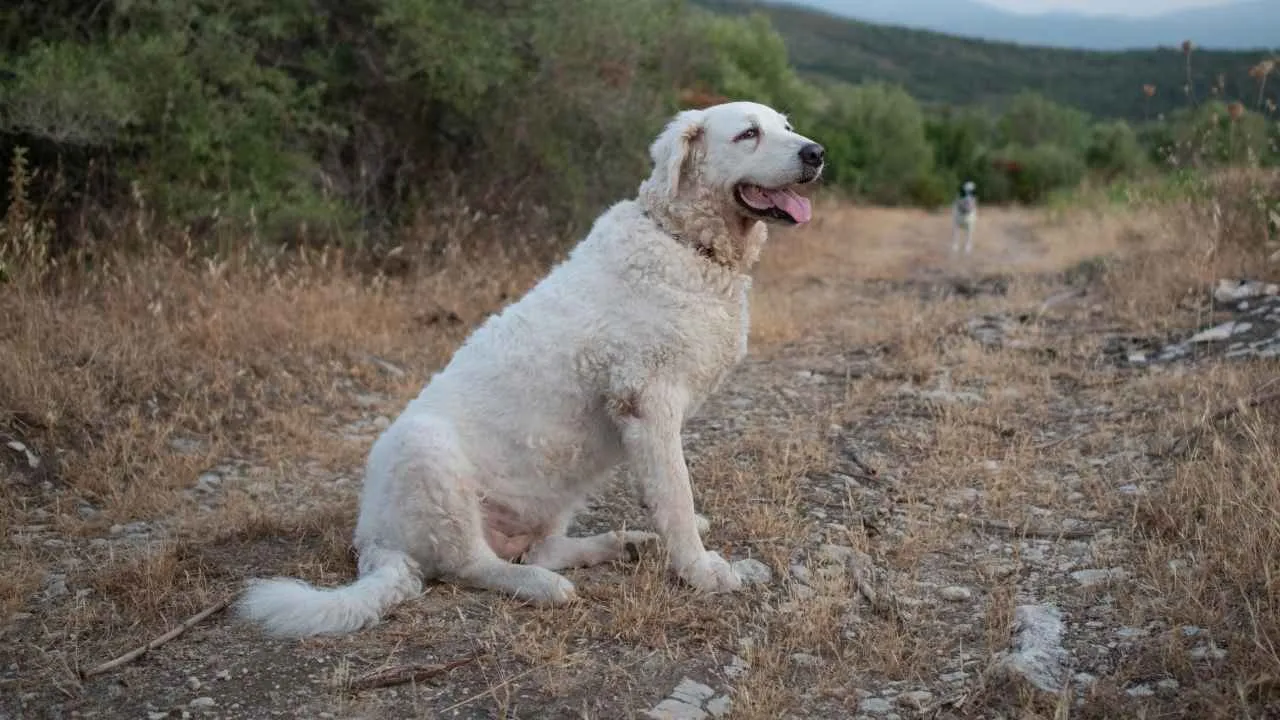
- Origin: Ancient flock guardians from Hungary with roots in Central Asia and ties to royalty.
- Temperament: Confident, calm, protective, loyal, and wary of strangers.
- Physical build: Large white coat, solid frame built for stamina across ranges.
- Protective instincts: Self-reliant and vigilant; prefer strategic deterrence over confrontation.
- Care & lifespan: Lives about 10–12 years; heavy shedding seasons demand regular grooming; thrives with ample room to roam and strong discipline.
For centuries in Hungary, Kuvasz dogs have guarded expansive flocks across plains and mountain pastures. Imprinted with livestock from a young age, they excel at blending in and keeping watch.
These dogs work independently, sensing threats and stepping up without needing direct commands — the kind of reliable presence that cuts losses in wide-ranging grazing systems. More than just farm dogs, they stand beside entire herds through harsh weather and shifting terrain.
According to WebMD, the Kuvasz carries a regal history — once called “armed guard of the nobility” and favored by Hungarian kings. These dogs are independent thinkers, fearless, and calm, but always alert.
They’re loyal to the family and flock, affectionate yet reserved with strangers. And they’re steadfast — ready to face threats without fuss, preferring to stand their ground rather than engage directly.
4. Tibetan Mastiff

- Origin: Ancient breed from Tibet and the Himalayan Plateau, tied to Central Asian guardian traditions.
- Temperament: Territorial, loyal to family, aloof with strangers, with strategic protective instincts.
- Physical traits: Large-framed (70–150 lb, 24–26 in), dense double coat in varied colors, often mane-like ruff.
- Protective behavior: Known for vigilance through barking rounds at night, capable of deterring predators by its presence.
- Care & lifespan: Lives ~10–12 years; needs moderate exercise, daily brushing during seasonal shedding.
The Tibetan Mastiff is one of the most ancient guardian breeds, shaped by generations in the Himalayas to protect livestock and property across vast terrain. Though modern organizations advise they’re not ideal full-time LGDs on Western farms, when properly socialized and living closely with flocks and humans, they offer unmatched territorial vigilance.
This breed lives up to its nickname of “guardian dog supreme” with a commanding presence and thick double coat that makes them look like something from legend.
They’re fiercely protective and strong-willed, known for “night watch” barking that echoes across mountain valleys. They require early socialization to curb aloofness toward strangers, and won’t hesitate to roam unless securely fenced.
5. Anatolian Shepherd
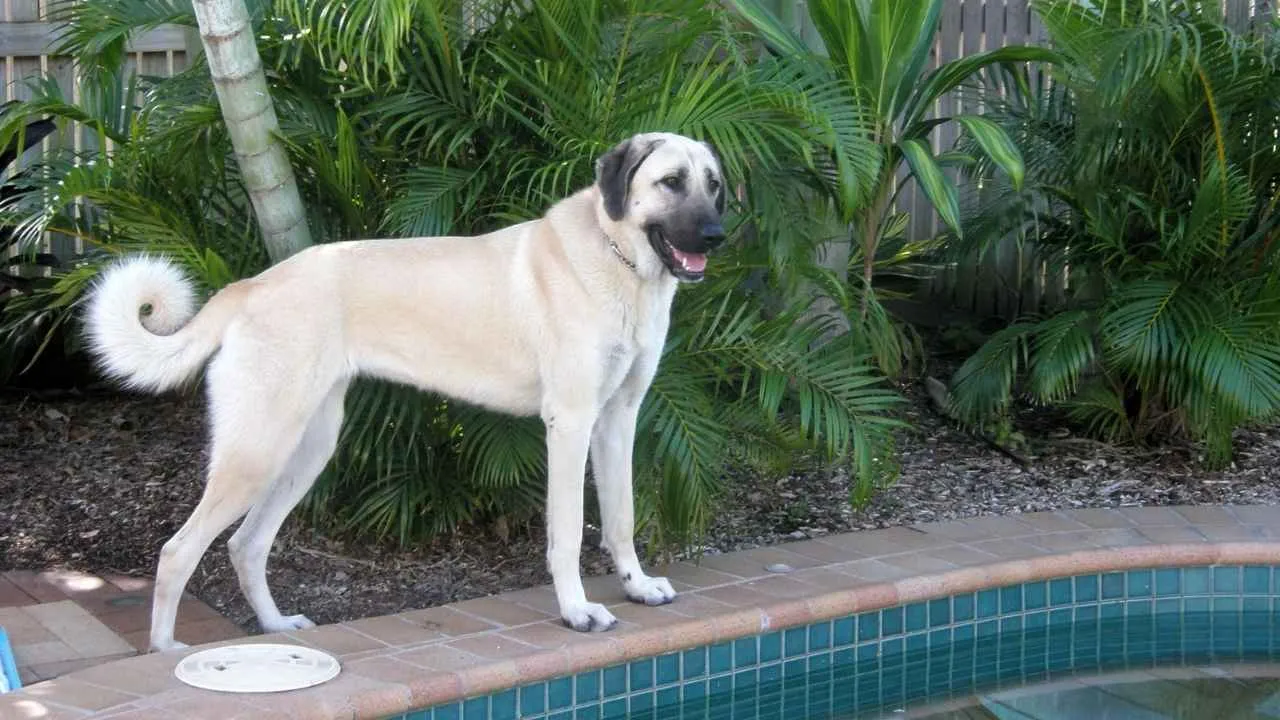
- Origin: Ancient guardian breed from Asia Minor, refined through centuries of natural selection in Turkey.
- Temperament: Steady, loyal, independent—requires mutual respect and early socialization to thrive.
- Physical build: Large frame, muscular, powerful jaws, short weather-resistant coat.
- Protective instincts: Naturally defensive of livestock and human companions—alert, territorial, and aware.
- Care & lifespan: Lives 11–13 years; needs consistent boundaries, secure fencing, and space to move freely.
The Anatolian Shepherd isn’t just a farm dog—it’s a full-on guardian, known for watching over hundreds of acres and large flocks without breaking a sweat. Originating from Turkey, this breed was built for livestock protection and has been trusted for centuries by shepherds in rough, rural terrains.
They’re independent thinkers and not easily startled, which makes them ideal for large-scale farm guarding. With proper training, Anatolians become deeply loyal and highly effective guardians that won’t back down when it comes to threats—animal or human.
This dog isn’t loud or reactive unless it senses something worth your attention. It often works solo, reading the land and animals around it, and taking action before you even realize something’s up.
And unlike some other breeds, it doesn’t look for trouble—it just ends it. With the right bond and leadership, the Anatolian Shepherd can be both a dependable guard dog and a steady, affectionate companion.
6. Maremma Sheepdog
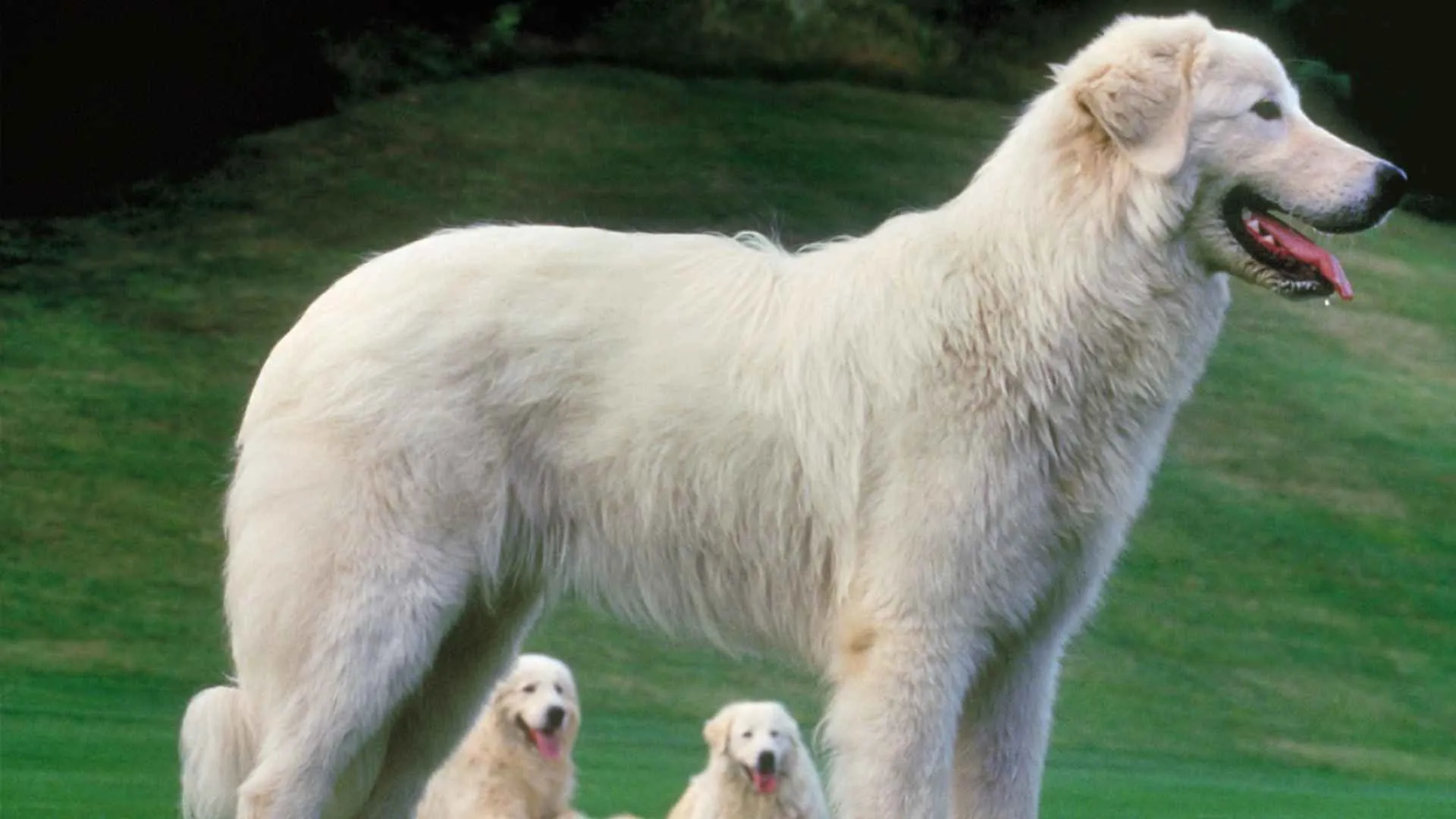
- Origin: Ancient Italian flock guardians rooted in the Maremma and Abruzzo regions
- Temperament: Independent, alert, calm, and protective; reserved with strangers but loyal to household
- Physical build: Sturdy, muscular frame; thick white coat for weather resilience and nighttime visibility
- Protective instincts: Use deterrents like barking, scent marking, and blocking rather than aggressive confrontation
- Care & lifespan: Approximately 12–14 years; regular grooming is essential during heavy shedding; requires space to roam
The Maremma Sheepdog, also known as the Maremmano‑Abruzzese, has guarded livestock in the rugged regions of Tuscany and Abruzzo since Roman times. Trained from puppyhood with minimal human contact, these dogs imprint on sheep, goats, and other animals, including alpacas and poultry.
Their natural drive to protect flocks means farms using multiple Maremmas report far fewer predator incursions, often no livestock losses at all across expansive grazing areas.
These majestic dogs typically weigh between 65–100 lbs and stand 24–29 inches tall. Their solid white, dense double coat insulates them from harsh weather and camouflages them with the flock.
Maremmas are fiercely devoted: they quietly protect family and animals they bond with, but remain reserved around strangers. When alarmed, they use barking, body blocking, or scent marking before any confrontation.
7. Caucasian Shepherd Dog
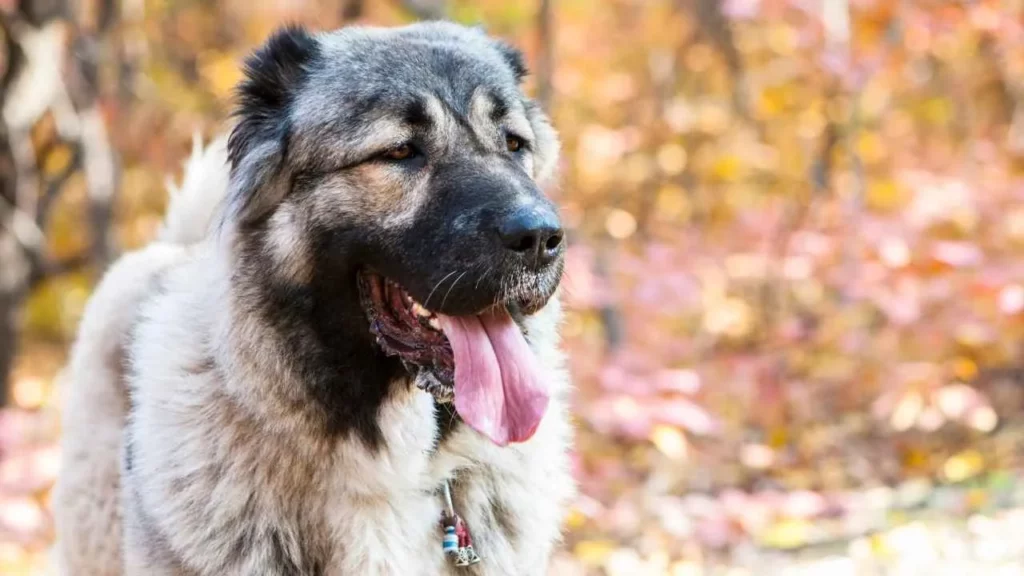
- Origin: Traditional working breed developed in the Caucasus region (Georgia, Armenia, Azerbaijan, Dagestan) over centuries.
- Temperament: Loyal, protective, unwaveringly courageous—natural guardians but not overly reactive.
- Physical build: Massive, high-set tail, strong bones; straight, thick coat in multiple colors—including piebald and brindle.
- Care & lifespan: Lives about 10–12 years; needs early proper training, secure fencing, space to roam, and daily grooming to manage coat and drooling tendencies.
Hailing from the towering Caucasus Mountains of Europe and Asia, the Caucasian Shepherd Dog was bred to guard livestock and property from wolves, bears, and intruders over vast terrain and centuries.
Their presence alone often deters predators—their intimidating size and unwavering courage make them natural territorial guardians without constant human oversight.
These dogs are massive—males often exceed 110 lb, with a muscular, rugged frame and a dense, coarse double coat that varies in length and color. They’re known for being bold and self-assured, able to make decisions independently as guard dogs, but they require early socialization and consistent leadership to channel that drive productively.
Conclusion
The best farm dogs aren’t just sentinels; they’re thinking, responsive partners that understand their role and adapt to the land and animals they protect. While some may associate hunting dogs or herding dogs with utility, it’s the livestock guardian breeds that bring a distinct skillset—patrolling independently, reading threats, and acting when it matters.
Many of these large dogs, often called gentle giants, strike the perfect balance between power and patience. And here’s the surprising part: behind their imposing presence, many also double as a family pet, forming strong bonds not only with livestock but also with the humans they live alongside.


